The Secret History of Hyderabad State of the Nizam (South India; 1724 – 1948)
Last Updated on July 15, 2021 by Hamad Subani
The Nawabs of Awadh as the new “Sayyid Brothers”

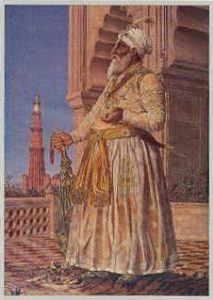
With the fall of the Sayyid Brothers, only the Peshwas had the strength and resources to put an end to Mughal India. But this time, they no longer had the insider assistance of the Sayyid Brothers. They would have to rely on secret supporters of the Sayyid Brothers, such as the Nawab of Awadh Saadat Khan, who had established himself in the Mughal Court and had gained the trust of the Emperor. Unlike the Sayyid Brothers who became infamous for their open hostility to Mughal Emperors, the Nawabs of Awadh adopted an opposite approach. They would gain the trust of Mughal Emperors and secretly betray them. Thus, they accomplished more damage than the Sayyid Brothers. Some have also suggested the possibility that the Sayyid Brothers went underground and started operating through the Nawabs of Awadh, and indeed, the name pseudonym of the first Nawab of Awadh as “Saadat” which is a derivative of Sayyid is telling. The Nawabs of Awadh are known for establishing Shiism in North India. They built Imambaras, where Shiites would publicly practice their rituals and demonize Sunnis. The Imambaras also had mock tombs of Shiite-Muslim heroes, and this contributed to the Islamically abhorrent practice of venerating graves. They also sponsored new forms of Urdu poetry based on sad elegies, which would be recited by women with music-like chanting rhythms (marsiya). They also improvised drum-beating parades, mourning processions and street theater based on the events of Karbala. All these efforts were passionate propaganda for Shiism, which they hoped would replace mainstream Sunni Islam. Soon these practices even spread to the Hindus of Delhi, who constructed replicas of the cenotaph of Imam Hussein, and on the 10th of Muharram, threw them into rivers or buried them. As the Nawabs of Awadh grew powerful, they shifted their capital from Faizabad to Lucknow.


Before embarking for Delhi, the new Peshwa Baji Rao I first sought to counter Asif Jah I, who had already suspended revenue payments to the Marathas from Deccan (which had been earlier ratified by Peshwa Balaji Vishwanath). Ever since Asif Jah I had become the Viceroy of the Deccan, he made several attempts to oust the Chitpavani Peshwas by fostering dialogue with Sahu and Tarabai, using non-Chitpavani brahmins as his interlocutors and spokesmen. He banished Maratha revenue collectors from the Carnatic region. Asif Jah I then invaded Pune, and installed Sambhaji II of Kolhapur (a direct descendant of Tarabai) as the new Maratha Chhatrapati. Peshwa Baji Rao I and Asif Jah I soon went to battle on 28 February 1728 at Palkhed. Asif Jah I was faced with the betrayal of Sambhaji II of Kolhapur, who refused to assist him even though he had earlier promised to do so. Asif Jah I agreed to a truce, which restored the treaty which had been earlier ratified by Peshwa Balaji Vishwanath. It is important to understand that Mughal rule had never been fully implemented in the Deccan. Thus despite its vast area, the revenue that was obtained from the Deccan was a fraction of the revenue obtained from other provinces such as Bengal and Uttar Pradesh, where stable Mughal rule had turned them into agricultural goldmines. Thus, Asif Jah I had to fight a formidable enemy with comparatively little revenue and resources than the Mughals of North India. And therefore, he had to seek peace if the situation turned against him.
The Peshwas make a Second Attempt at terminating the Mughals in secret collaboration with the Nawabs of Awadh

Content that he had disabled the Nizam and that the Nizam would not risk breaking the treaty again, Peshwa Baji Rao I headed towards Delhi. He had the secret support of Saadat Khan and his son Safdarjung, the Nawabs of Awadh, who had also managed to convince Muhammad Shah that they were the best military commanders to deal with the Maratha threat. Leading a strong force of 150,000 horsemen, Saadat Khan engaged in a brief skirmish with the forces of the Peshwa. Then Saadat Khan mysteriously withdrew and encamped at Mathura. From there, he sent news to the remaining Mughal military commanders that the Peshwa had been defeated and had left for the Deccan. The remaining Mughal military commanders left Delhi completely unguarded and began to celebrate. In reality, the Marathas had hidden themselves in a natural depression surrounded by hills at Talkatora. Once the Peshwa recieved confirmation that Delhi was unguarded, he proceeded towards it. He was intercepted by an 8000 strong army of Mir Hassan Koka, which had been sent by the Emperor to confirm that the Peshwa had indeed left. This force was easily defeated and Delhi was viciously plundered on 28th March 1737. But the Marathas could not breach the walls of the Red Fort, and the Emperor remained secure. Further, the protege of Asif Jah I Qamaruddin Khan organised many skirmishes outside Delhi which disoriented the Marathas. Peshwa Baji Rao I intended to soon garrison his forces in the Red Fort, where he and Saadat Khan would soon play the role of kingmakers, just as Peshwa Balaji Vishwanath and the Sayyid Brothers once did. But suddenly news came that Asif Jah I had assembled a mighty army and was on his way to protect the Emperor. The risk of Asif Jah I coming to Delhi and assuming command of the remaining Mughal army was too great. Hurriedly, the Peshwa left Delhi on 31st March 1737, after cramming a very large booty into bullock carts. He intended to intercept Asif Jah I’s force when it was alone and isolated, before Asif Jah I reached Delhi and assumed command of the remaining Mughal army. The two met at Sironj. But Asif Jah I managed to mislead the Peshwa that he was merely visiting Delhi to repair his relationship with the Emperor. Once in Delhi, Asif Jah I gathered an even larger force by pooling in additional Mughal commanders. Among those who joined him was the Rajput Jai Singh II of Amber. But Asif Jah I made the grave mistake of allowing conspiratorial elements such as Saadat Khan and the regent of Bhopal, Yar Muhammad Khan Bahadur, to operate as commanders. When Asif Jah I returned to the Deccan to take on the Peshwa, he found himself besieged in the city of Bhopal by the forces of Peshwa Baji Rao I. This trap was set up by design. In the environs of Bhopal, every move of Asif Jah I would be secretly transmitted to the Marathas by the conspiratorial rulers of the State of Bhopal. Saadat Khan and Safdarjung soon deserted Asif Jah I, who was left to sign a humiliating peace treaty with the Marathas. This time, they made Asif Jah I swear on the Quran that he would not break the treaty.
The Secret Role of the Nawabs of Awadh in the Invasion of Nadir Shah

In 1736, Nadir Shah, a strongman from the Afsharid tribe deposed the Safavids of Iran, putting an end to centuries of Illuminati domination of Iran. Nadir Shah was a closet Sunni, and soon started a process of reversing Safavid pro-Shiite policies in Iran. Since Iran has always been a hotbed of Illuminati activity, the response against Nadir Shah was swift. But Nadir Shah countered all conspiracies hatched against him with sanguine brute force. The Powers That Be responded to Nadir Shah’s initiatives by baiting him into invading Mughal India, and focusing his energies there, so that the Safavids could regroup in Iran. They hoped that Nadir Shah would never return and would permanently relocate to India in a struggle for the Mughal throne. Or better yet, end up being killed in India. The diabolical Sayyid Brothers had just lost control of Mughal India, but their secret supporters (such as the Nawabs of Awadh) were still present in Mughal court, and they arranged for the deterioration of relations between the two powers over trivial border issues. The predatory British had established a foothold in Mughal India, but lacked the resources to conquer it. And therefore, Nadir Shah’s destruction of Mughal India was meant to facilitate its later conquest by the British.

It is unlikely that Nadir Shah’s well-disciplined force of 55,000 could overcome the Mughal force of over 300,000. Rather, Nadir Shah was seeking a permanent settlement and monetary compensation for border issues that the Mughals had overlooked. But Muhammad Shah once again made the mistake of letting Nawab of Awadh Saadat Khan lead a contingent as a military commander. Needless to say, there were Illuminati elements in Nadir Shah’s retinue, and Saadat Khan was likely in close correspondence with them. Together, they organized the rout of the Mughal Army, and later, the ransacking of Delhi. But they failed to use Nadir Shah to put an end to the Mughal line, even though he had full opportunity to do so. The diplomacy of Asif Jah I mellowed the sanguine nature of Nadir Shah, who being a closet Sunni, had little personal hatred for the Mughals. He would content himself with returning to Iran with a monumental amount of loot.
As in the battle of Bhopal, the conspirators on both sides had the opposing armies assemble at Karnal. This was home to the Illuminati royalty of Sassanid Iran who had fled the Muslim invasion. They had assimilated with Hindus. But with the rise of Islam, they would later resurface as the Nawabs of Karnal. And thus, conspiratorial elements located in Karnal could oversee the battle and transmit critical information from Saadat Khan to Illuminati elements in Nadir Shah’s retinue. Later, some members of the household of the Nawabs of Karnal were granted huge estates in Muzaffarnagar, Uttar Pradesh. Many followers of the Nawab of Karnal were Jats (Muley Jats).
Despite repeated betrayals and risks Asif Jah I had been put through in his previous efforts to rescue Muhammad Shah, Asif Jah I showed up once again to advise the Mughal Emperor. Thanks to his efforts, the Mughals would still survive this vicious defeat.

With the two armies assembled opposite to each other, Saadat Khan without any authorization from the Mughal high command, got on his elephant and rode out towards the Persian forces in pursuit of some skirmishers with a cavalry of 2000 men. The skirmishers put up a small fight, then pretending to be defeated, rode towards their main army, with Saadat Khan in pursuit. Saadat Khan then began dispatching fraudulent reports to the Mughal high command, saying that he had inflicted a heavy defeat on the Persians, and that they should urgently dispatch all reinforcements his way to complete the victory. Muhammad Shah fell for the ploy, but Asif Jah I and the main commander Khwaja Asim Khan Dauran had their reservations, and warned Muhammad Shah against taking such a rash decision. In his infinite stupidity, Muhammad Shah questioned the martial ability of Khwaja Asim Khan Dauran, and in response, he headed out with a cavalry of 8000, and a steady stream of Mughal reinforcements kept following him. Nader’s skirmishers were able to divert the army of Khan Dauran away from Saadat Khan. It seems Saadat Khan planned well in advance to never wait for Mughal reinforcements, as he continued proceeding in a completely different direction giving no opportunity to let Khan Dauran catch up. Once surrounded by Persians, Saadat Khan quietly surrendered, and some mysterious soldiers on Nadir’s side arranged for his safe custody. The Illuminati elements in Nadir’s retinue made sure he was never harmed in combat, even though his army was decimated. Khan Dauran and the steady stream of reinforcements that followed him rode into an ambush. Even though they fought bravely in hand-to-hand combat, the lack of a unified deployment with no grand tactical plan or purpose ensured a complete rout. Khan Dauran was killed in action. The conspirators were aware that Nadir Shah was seeking a peaceful resolution and sought to meet the Emperor. So they sent the Mughals a false document purporting to be Khan Dauran’s will. In it, he purportedly warns the Emperor never to meet Nadir Shah and and to keep fighting him at all cost. When news of the death of Khan Dauran spread, many Mughal soldiers deserted. With the exception of Asif Jah I (who decided to never leave the side of the naive Muhammad Shah) and Saadat Khan, all of the 19 Mughal commanders and 400 experienced minor commanders were killed in action, along with 30,000 Mughal soldiers.
As a prisoner, Saadat Khan tried his best to sour any hopes of a peaceful resolution. He suggested to Nadir Shah that he personally call Asif Jah I to his camp for a resolution. He hoped that he could somehow get Asif Jah I executed. It was arranged for other Mughal nobles to also show up in armour at the same time, and the conspirators would try to convince Nadir Shah that Asif Jah I had plotted to kill him. Without the slightest fear, Asif Jah I showed up. Nadir Shah was impressed by his personality and they were soon negotiating in private. Asif Jah I agreed that the Mughal Emperor should pay an indemnity and Nadir Shah requested that the Mughal Emperor also come to meet him. The Mughal Emperor heeded the advice of Asif Jah I and proceeded to the camp of Nadir Shah, where the two had a very civil dialogue. The remaining Mughal forces were allowed to leave without being taken prisoner. When Asif Jah I returned, the Mughal Emperor had him take the position of the now dead Khan Dauran, making him the supreme military commander of the Mughals. Saadat Khan, watched in seething hatred. Not only had Nadir Shah refused to terminate the Mughals, he was making peace with them and would soon return to Iran, much to the chagrin of remnants of the Safavids stationed there. And instead of getting killed as planned, Asif Jah I was now more powerful than ever. He persuaded Nadir Shah to march to Delhi and extract a much heavier indemnity from the Mughals. Soon Nadir Shah was marching to Delhi with Saadat Khan in tow. Asif Jah I tried to salvage the peace by having Muhammad Shah once again stay with Nadir Shah, to quell Nadir Shah’s increasing distrust. Saadat Khan started heavily taxing the citizenry of Delhi on behalf of Nadir Shah. he became a public enemy, and was in constant risk of assassination. Further he had earned the enmity of the most powerful man, Asif Jah I. He realised that after Nadir Shah left, he would be lynched. In 1739, he reportedly dies at the age of 59 years. Or he faked his death and moved back to Awadh, and continued operating in the shadows.
Nadir Shah’s army was very disciplined and he issued strict orders that any harassment of the citizenry would be punishable with mutilation. But the secret conspirators, still intent on a showdown between Nadir Shah and the Mughals, spread vicious rumours that led to Persian troops being attacked. Nadir Shah responded by punishing only those who participated in the attacks. But one day, while visiting a mosque, the conspirators fired a musket at him, narrowly missing him but killing one of his Generals. Nadir Shah ordered massacres wherever Persian soldiers had been killed. He then sat with a solemn face at the mosque, and no one dared to interrupt him. Except Asif Jah I, who approached him and said, “You have taken the lives of thousands of people of the city, if you still wish to continue the bloodshed, then bring those dead back to life and then kill them again, for there are none left to be killed.” Nadir Shah ordered the massacres to be immediately stopped, and he is quoted as saying that Delhi had been forgiven because of the white beard (referring to Asif Jah I). He then packed such a substantial booty that he would not collect taxes in Persia for the next three years. He left in May 1739, leaving Delhi to Muhammad Shah and Asif Jah I. 30,000 people had died in the massacres.

It is ironic that Safdarjung, the successor of the Nawab of Awadh Saadat Khan, both of whom were complicit in the destruction of Delhi two times, first under Peshwa Baji Rao and then under Nadir Shah, would later have a road, an airport, a bus terminal a hospital and a colony, all situated in Delhi, named after him. This was testament to the importance the Nawabs of Awadh commanded in the Illuminati hierarchy.
Asif Jah I had to return to the Deccan to deal with the Marathas. He would evict the Marathas from the Mughal province of Carnatic in 1743, and his allies in this expedition would later assume the seat of the Nawab of Carnatic. But he never sought to completely turn his back on Delhi. Before leaving he handpicked a trusted follower Qamaruddin Khan to succeed him as vizier and installed his eldest son Feroze Jung II as an important military commander in the court of Muhammad Shah. Asif Jah I would save the Mughals from apparent annihilation three times. And the Mughals would continue to linger till 1857, when the British finally destroyed them.
The rise of Ahmed Shah Abdali and the Rohillas

One of the commanders Nadir Shah brought along with his forces was a Pashtun-Afghan with an impressive personality named Ahmed Shah. He commanded a contingent of Pahstun Abdalis. After the death of Nadir Shah, he founded the Durrani dynasty in Afghanistan (Durrani being a title of his). The Durranis started emerging as a new force in the Indian Subcontinent. It was in the best interests of the Mughals to make peace with them and incorporate them in their administration. They made the best soldiers, and unlike the Marathas, they had little desire to destroy the Mughals. But a Mughal-Durrani alliance was never allowed to happen, thanks to the intrigues of Safdarjung, who sought to confront them and aggravate them at every occasion. Safdarjung also sought to oppose the Rohillas at every occassion. Like the Durranis, the Rohillas were Pashtuns who had settled in Uttar Pradesh during the reign of Aurangzeb. Being Sunni and fiercely independent minded, Safdarjung saw them as a threat not just to his fiefdom of Awadh, but also to the Marathas. And the Rohillas were gaining increasing influence in the Mughal court. One rising Rohilla star in the Mughal Court Najib ud-Daula became as big a threat to the conspirators as Asif Jah I. Needless to say, the Durranis and the Rohillas had a natural affinity towards each other. They shared much in common.
During a battle with the forces of Abdali in Punjab, Mughal vizier and protege of Asif Jah I Qamaruddin Khan was killed. Emperor Muhammad Shah who had grown very close to the vizier died the same year (1748) in grief. This further cemented the position of arch-conspirator Safdarjung. Muhammad Shah was succeeded by Ahmed Shah Bahadur, the son of one of his Hindu wives (titled Qudsia Begum) The head eunuch of the Mughal court, Javed Khan and the mother of the Emperor Qudsia Begum became effective regents. Qudsia Begum soon developed a liking for the Rohillas. And this alarmed Safdardjung, who had appointed himself as the vizier. In 1749, Javed Khan plotted an assassination attempt on Safdarjung, but unfortunately failed. Safdarjung would later assassinate him in 1752. Soon the Rohillas under Ahmed Khan Bangash attacked Awadh, and Safdarjung who was stationed there, barely escaped being killed. Safdarjung would strike back at Rohilkhand using Jat and Maratha mercenaries. His cultivation of Jats as mercenaries further emboldened their later rebellions.
Illuminati Infiltration into the Bloodline of Asif Jah I?
Soon, the Emperor, his mother and the Rohillas began to conspire for the removal of Safdarjung from his post as vizier. But Safdarjung found an unlikely ally in the eldest son of Asif Jah I, Feroze Jung II who had been installed in the court of Muhammad Shah before Asif Jah I left for the Deccan for the last time. Feroze Jung II would pretend to be an enemy of Safdarjung and gain leadership of the anti-Safdarjung faction, only to hijack it and use it for pursuing an agenda that seemed to be in line with that of Safdarjung. How could the eldest son of Asif Jah I be compromised by the very conspiratorial Iluminati-linked groups he had spent his whole life fighting remains a mystery. But we do get a hint in the mother of Feroze Jung II. All we know is that Saidunnisa Begum was the daughter of Shaikh Najibullah Khan Wala Shahi, of Gulbarga. Is is a coincidence that her other son Nasir Jang was just as sanguine and conspiratorial as Feroze Jung II? Nasir Jang even tried to unseat the old Asif Jah I in his lifetime by clashing swords with him in battle. He lost and was jailed for this transgression. In the later war of succession, it is clear that he was the “Illuminati candidate.” He even received British help. On the other hand the sons from the other wife of Asif Jah I (Umda Begum of Hyderabad) do not appear to be directly linked to conspiratorial groups.
We have seen previously that the Illuminati infiltrated Mughal families by using their women as vectors. We see several instances of Safavid, and Safavid-linked princesses marrying into the Mughals this way. Similar infiltration took place among the Ottomans. Such women were usually crypto-Jews. And in Judaism, Jewish belief and Jewish ethnicity is passed down from the mother, not the father. The children from such marriages were isolated from their fathers at a very early age and groomed to identify with their mother and other Illuminati conspirators. We can thus assume that Asif Jah I, being more powerful and sagacious than the Emperor, was a prime target for such infiltration. In the case of Feroz Jung II, we see him clearly working in cahoots with the Chitpavani Peshwas and the Nawabs of Awadh later on. But it seems he was very discreet about his support for them when his father was alive.


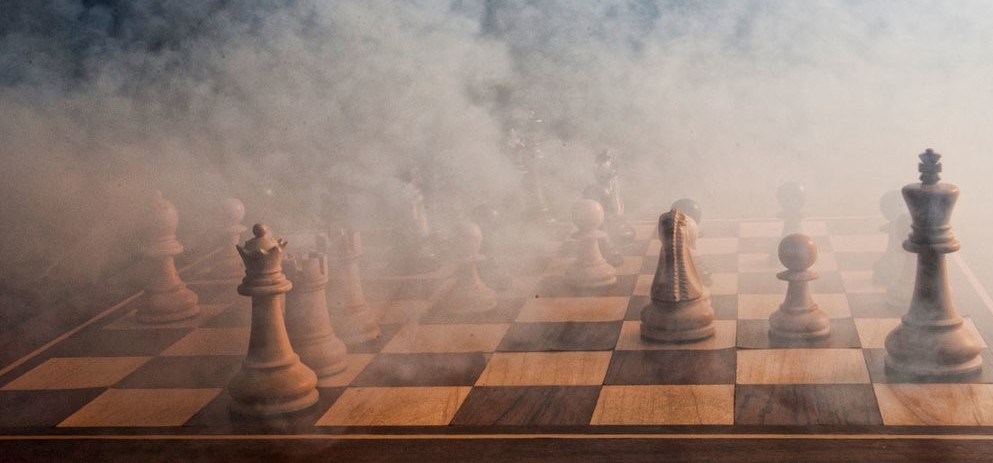




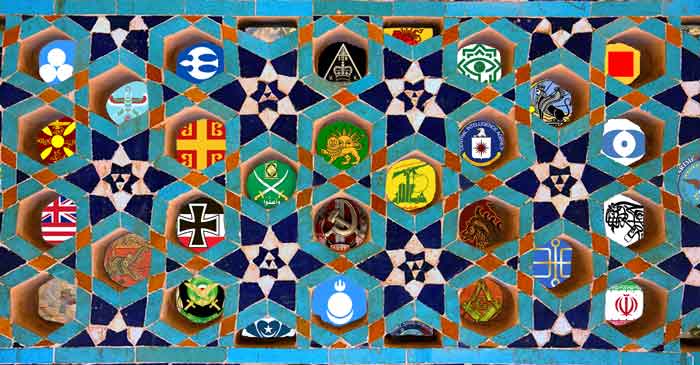
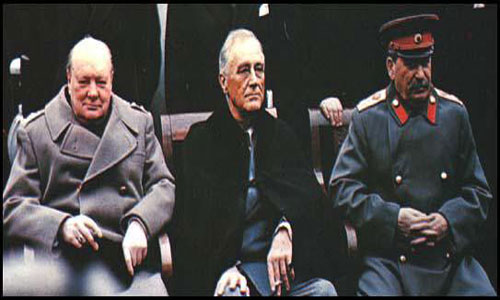


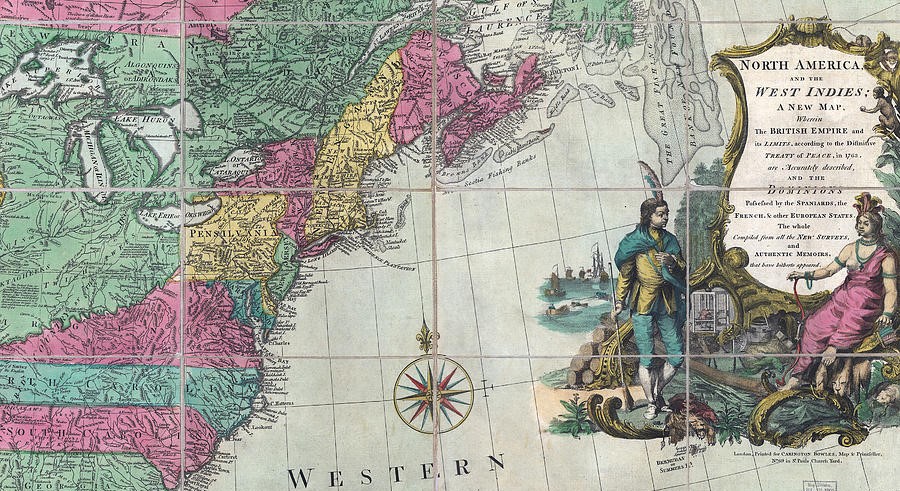
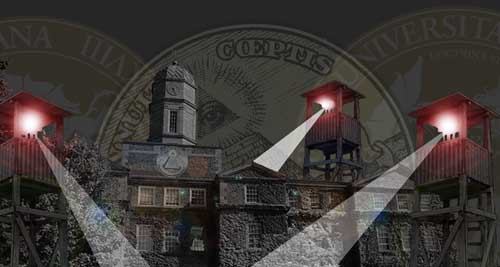
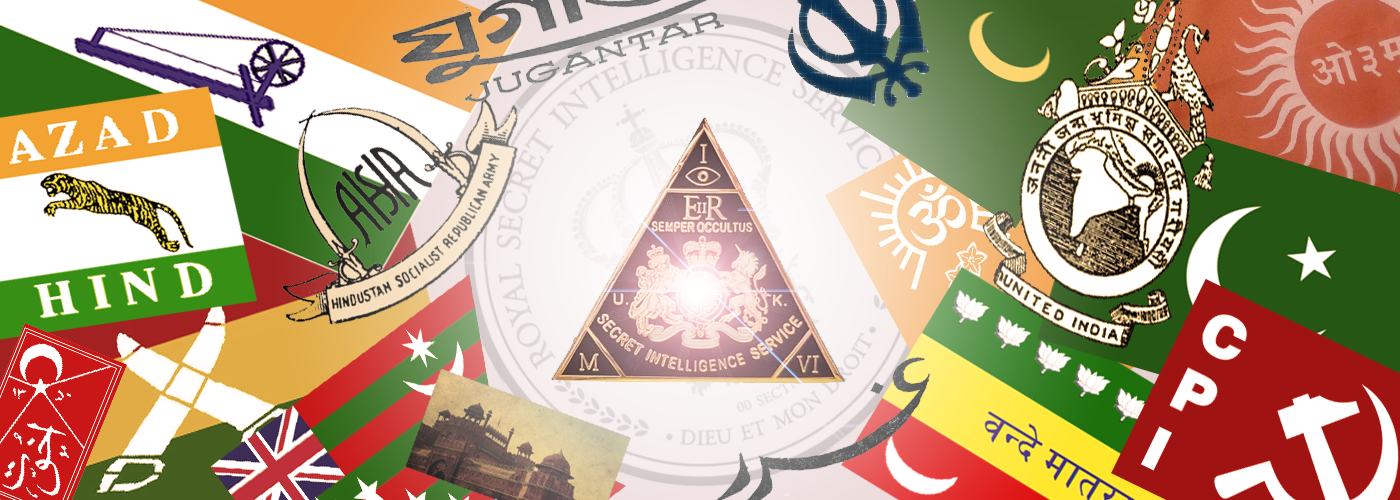
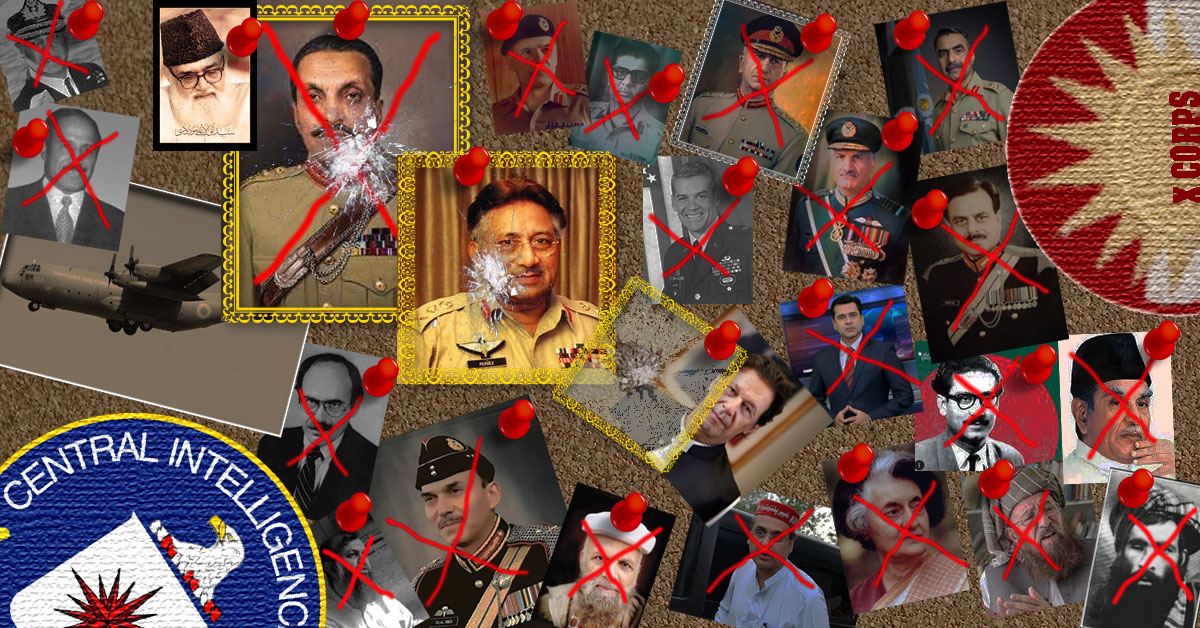

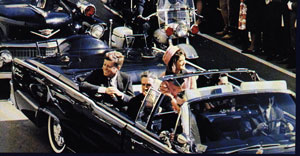

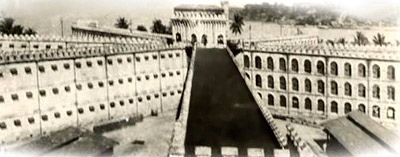

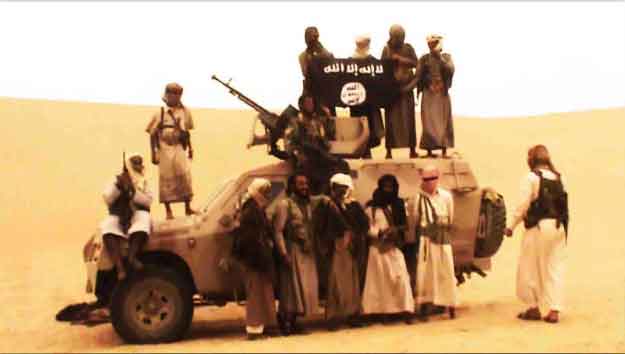
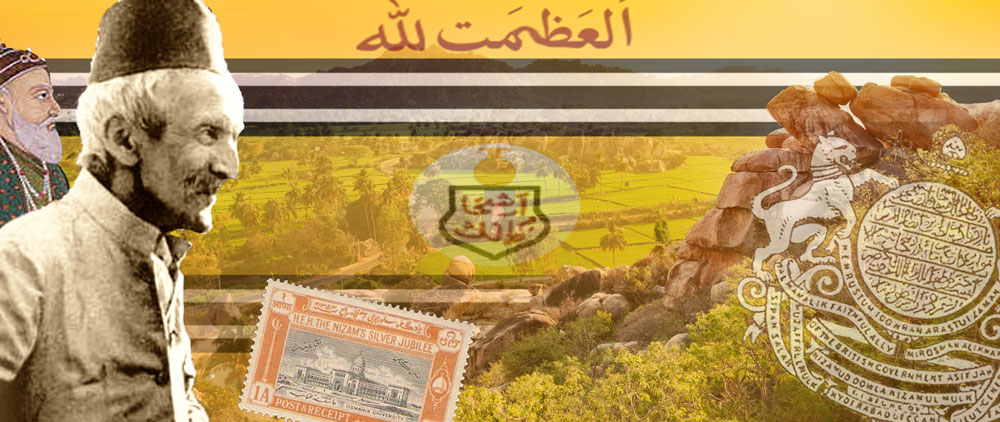






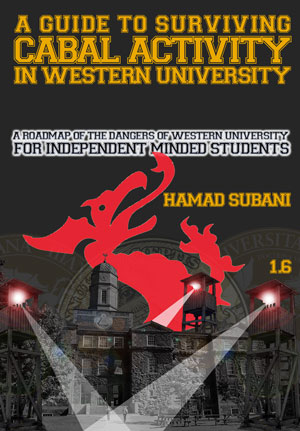
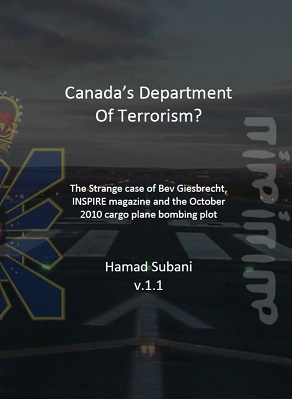
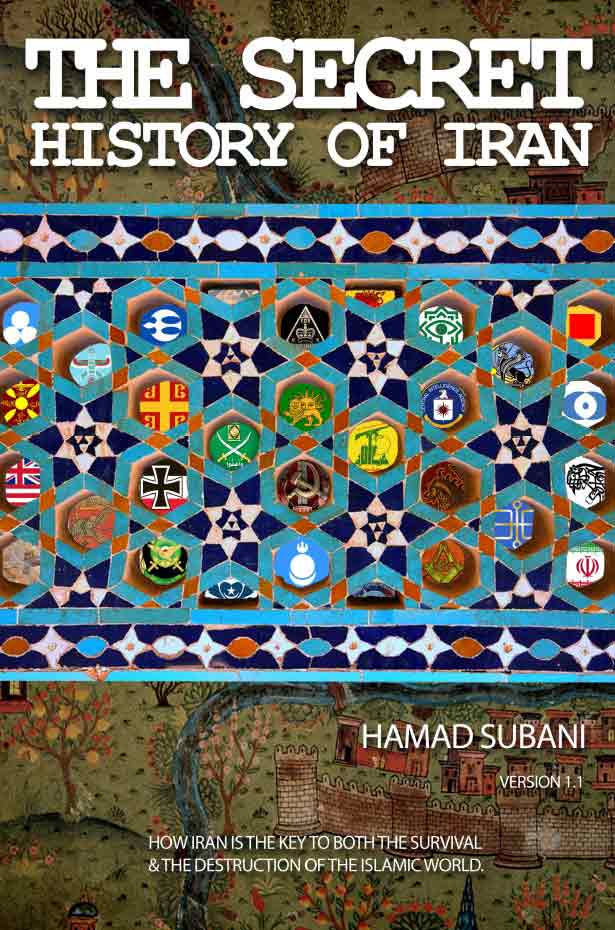
The First Freemason Lodge in India was not at the Gosha Mahal Baradari Hyderabad. It was a grand building built by teh Last Qutub Shahi ruler Tana Shah in 1682 and was donated to teh freemason by Nizam in 1872.
The first lodge was established for the British Military and other authorities in India in 1728 at Fort William Calcutta called Star of the East.
The doors of freemason were opened for Indians in 1775, when Nawab Umdatul Umra of Carnatic opened first lodge in Trichonopoly, in South India.
Please refer Freemasonry in India
https://linfordresearch.info/fordownload/World%20of%20Fmy/Nairn%20India.pdf
Shoukat Ali Khan Hyderabad India
Thanks for this.
The grave of Aurangzeb is in the premises of a Dargah in Khuldabad near aurangabad. there is no tomb over it nor even a structure.
Taj Mahal like structure is in aurangabad, whichis around ten miles away from his grave.
So what you have mentioned about his grave is not correct.
Thank you for the clarification. The Taj Mahal like structure is actually the tomb of his wife. I have corrected.
Gosh !!! what an intellectual article . Very first time I got to read something eloborative on Shah Waliulllah and the reason of his invitation to Abdali. You are incredibly remarkable in presenting the profoundness and minute details on the subject. Are you a historian or have you written any books.
Share your articles or suggest some books on historical India from Muslim rulers point of view. Had enough of Aurangazeb bashing and Muslim rule criticism nowadays around. So was wondering the justification from the other side.
Please do share.
You could take a look at my book The Secret History of Iran. Since the history of medieval Iran is linked to that of India, it does contain a lot of previously undisclosed information on the Mughals and other Indian dynasties as well.
Qasim Rizvi did not escape , he did his prison term and was relocated to Pakistan by the Indian government . I find lots of unsubstantiated facts in your write up.
This is not the official history of Hyderabad State, it is the Conspiracy History of Hyderabad State, where we try to fill in the blanks in the official narrative. Its not for everybody. Do you really think Qasim Rizvi would be let go so leniently?
Hi, certainly, history of Hyderabad is enticing. I have come across a novel “Theft of Nizam’s Gold” by a writer from Hyderabad, Naser Banaqeeb who presented the life of Nizam in a wonderful way. The novel is a gripping tale of bygone era of Nizam, love and mystery of the gold stolen – the history doesn’t have any record of it. Yes, the gold stolen from Nizam’s treasure has no mentioning in any books. But, the author described the same in an artistic manner. The novel is available online at amazon.
Dear Abraiz Ali Khan,
I am based in Mumbai and an avid reader of “authentic” historical books.
I would be much obliged if you could share with me any such books in your possession, including “Tragedy of Hyderabad”.
My contact details are: iyerpnpl@gmail.com
Warm regards,
Arvind Iyer
Hello Mr. Arvind. This is the book I have mentioned: https://www.goodreads.com/book/show/18360701-tragedy-of-hyderabad
I found it in a Sunday, second-hand book market. Currently, this book is with my brother who lives in Canada. Sorry for not being able to share it.
Dear Mr. Abraiz,
I have a nephew in Canada whom I will be meeting at a family function in October. If you can share with me the contact details of your brother in Canada, my nephew can coordinate with him and photocopy the book and hand it over to me when we meet.
Incidentally I am in Hyderabad on Monday June 25th. I would be very happy to meet with you.
Once again my email id is: iyerpnpl@gmail.com
Warm Regards,
Arvind Iyer
Pl visit Haziq and Mohi a book store near Charminar , they have copies . Picked up my copy of Tragedy of Hyderabad and other books on hyderabad from there . The store finds a mention in The Last Nizam by Jhon Zubrcki and is regularly frequented by history buffs , most notable being William Dalrymple , he has given a beautiful account in The White Mughals of William Kirkpatrick the British resident during the end of the 18th century and his affair with Khai un Nissa great niece of Aristu Jah the prime minister at Nizam Ali Khan’s court . He eventually ended up marrying her and converted to Islam . Most of his research work was carried out by literature provided by Haziq and Mohi .
Hello Mr Iyer , you can get the book and many other out of publication books on Hyderabad at Haziq and Mohi book store near Charminar . The store finds a mention in the Last Nizam by Jhon Zubrycki and is frequented by history buffs from India and abroad , most notable being William Darlymple whose book The White mughals revolves around the stories of William Kirkpatrick the british resident at the end of 18th century in Hyderbad and his affair with Khai un Nisa the great niece of Aristu Jah the prime minister of Nizam Ali Khan , which he later marries and converts to Islam .
You may also be interested in The Destruction of Hyderabad by Abdul Gafoor Abdul Majeed Noorani. No idea where to find it though.
Its overwhelming to read this..present day hyderabadis are so ignorant about their past. . I wish many of them could read this
Assalaamualaikum. I am a citizen of Hyderabad itself. Born and brought up here. I do have an interest in our history as well. You have written a very engaging piece of research. Do accept congratulations for it. As it happens, there are a few points that I do disagree with. One is your saying that venerating graves is an “Islamically abhorrent practice.” But maybe you subscribe to one of those sects that see graves as idols, so let it pass. I don’t need to tell you that scholars have compiled voluminous works on this subject. Read them if you will.
The other point that raises my hackles is the flippant description of Jamia Nizamia. As it happens, I am closely related to this institution. All my teachers of Islamic sciences have studied at this institution. Your description of it stems of ignorance or, if you will excuse me for saying so, your prejudice against those venerate graves. Jamia Nizamia was started in 1876 AD. Its founder, who was the teacher (Ataleeq as they called them then) of the 6th and 7th Nizams, passed away in 1917. If you would look into the history of Jamia Nizamia and its scholars, you would see many un-Islamic activities and trends being checked by them. Keep in mind that it was a nascent institution without any power of enforcement. Which means that Jamia Nizamia could only tell that something was wrong and must be stopped, but could not actually go out and stop them. Frankly, there are many firsts the credit of whom goes to Jamia Nizamia and more specifically its founder, Imam Anwarullah Farooqui (May Allah shower His Mercy on him). Hyderabad was the only state to have departments of Qazaath – where marriages, divorces, etc. were registered, the only state to outlaw reprehensible Hindu customs like Murli, etc., the only state to have standardized weights, possibly the only state or one of the very few which trained people with a standardized syllabus to administer basic Islamic laws to the populace. The State Central Library (earlier known as Asafjahi Library) was established at the behest of Shaykh Anwaarullah. No, they were nor politically active. As I said, it was a nascent institution, just started. Maybe in time, if Hyderabad state would have been there, they would have played a greater role.
The best part about your piece is that you give sources. I do have some of the books like Tragedy of Hyderabad with me. I will surely read up as much as I can the source books that you quote and see your point of view in much broader and richer detail.
Best of luck for your future research.
Assalaamualaikum.
Thank you for the additional info on Jamia Nizamia. While I do accept that Jamia Nizamia did in fact play a positive role, I believe that the fact that it was an official institution limited and hindered its ability to fulfill its role in a more wholesome manner. For example, they could not critic the sponsorship and inclusion of Shiite practices of later Nizams. And by and large, they did fail to enlighten the Muslim population, as evidenced by the level of ignorance and the incorporation of non-Islamic practices into Islam by the common people. If The Powers That Be were serious about Islam, they would have supported it more thoroughly, perhaps with a budget much bigger than the war aid they gave to Britain. As you mentioned, they started doing so, but it was too little, and too late.
In Islamic history, Muslim groups attain political power only when they start imposing and reinstating the natural order of things. Otherwise nature overcomes them. Towards the end, the Nizams began failing to maintain their holistic connection to the Mystery Saint.
Dude you are awesome. Where you been?
Do you have any recommendation for occult conspiracy sites with muslim perspective?
The main reason why it’s so hard to find this is the cultural lag muslim readers annnd writers have due to the ravages of colonialism westernization and the like. In the world that emerged after ww2 seems the only ticket for indians and muslims to prosper in the west was the sci/tech route. So as a fractured bordered nation, there was not much literal development.
For example most muslims i know go as far as saying 911 was ‘possibly’ a conspiracy and that Kanye or whoever is a free mason, and that’s as far as it goes. They will never include the saudis or big banks or the company they work for.
Anyway look forward to reading your next masterpiece.
The only “Islamic” Conspiracy website that I find worth a mention is that of David Livingstone> http://www.conspiracyschool.com/